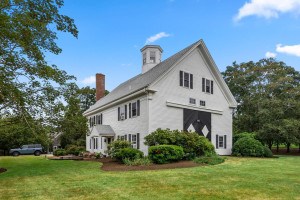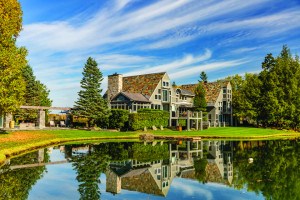This Shop Rebuilds and Maintains Rare Motorcycles
At Madhouse Motors, owner J. Shia relies on history while tapping into her innate creativity and photographer’s eye to restore vintage motorcycles and build custom ones.
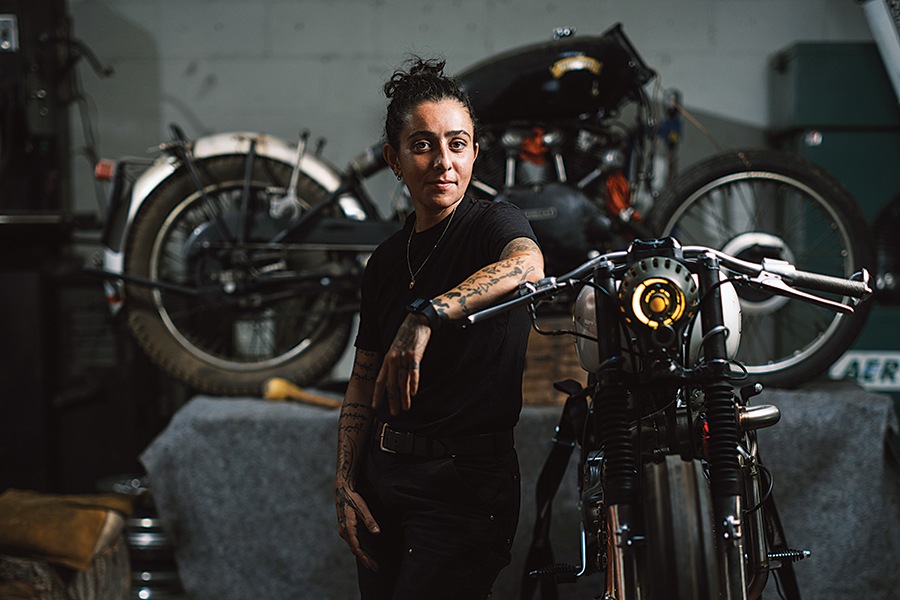
Photo by Dan Cutrona
Although she originally aspired to be a traveling photographer, J. Shia—owner of Boston-based Madhouse Motors—ended up veering off in a different direction. “My journey is a little bit deceiving,” Shia says. “I know outwardly it looks like I’ve been super into bikes since day one; that’s definitely true, to a certain extent, but working on bikes wasn’t what I had initially planned to do with my life.”
At first, Shia’s work as a mechanic was primarily based on making ends meet. “I didn’t really view motorcycles, building bikes, or anything like that as something enjoyable where I could be creative, have fun, and explore until later in my career.” But similar to photography, Shia’s artistry, eye, and skills have come in handy for her ultimate destination as the source customers ride to for everything motorcycle related.
Shia spent several years working on motorcycles at her parents’ home in Cambridge. After garnering enough business, she opened her own shop in Roxbury in 2009. “We’re a full-size service shop where we rebuild and maintain a lot of motorcycles in the city—all different kinds of years, makes, and models,” she explains. “Then we have another brand for the shop where we do the extremely rare and antique restorations as well as my custom builds.”

Simultaneously, Shia and her team work on extremely rare and antique restorations, as well as her custom builds. The former can sometimes require sourcing specific parts from overseas, while the latter often features elements of whimsy and creativity through the use of found objects like egg slicers and pencil sharpeners. / Photo by Dan Cutrona
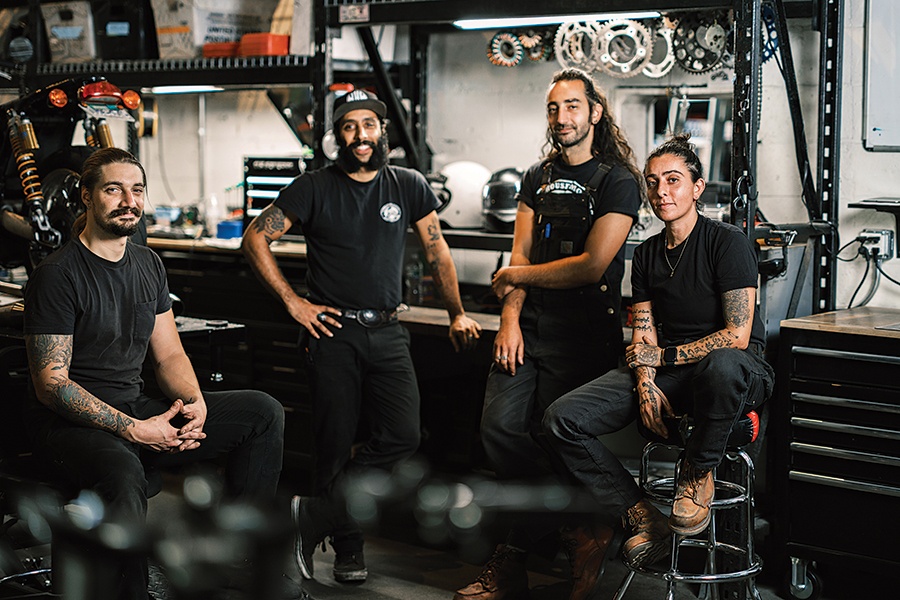
While Shia acknowledges she’s gotten a fair amount of attention for her work, she says she also needs and wants to credit her team at the shop. “Although I’ll do the design, they’re carefully and attentively executing a lot of the work. I’m not building every single bike. I try and do as much as I can, but when it comes to a lot of my clients, I have a wildly talented team of guys who are here working alongside me, and I’m really grateful for that.” / Photo by Dan Cutrona
As part of the process for the rare restorations, Shia and her team take everything slow and steady. “We study these bikes; we get as much literature as we can; and we make sure that we have the best general understanding of these kinds of irreplaceable machines before working on them.” She likens it to the same way someone would restore an old piano. “You have to educate yourself before touching it, so that side of the shop is more artisan.”
With the custom bikes, Shia explains, it’s a little bit free-flowing and playful. “The initial process is brainstorming what we want to do, and then I’ll design it and draw it on paper,” she says. “Then we get going—cutting the frame, rebuilding the motor, figuring out color palette and the stance and the shape of the bike. The custom bikes are a lot more relaxed; the rare restorations are more careful precision work.”
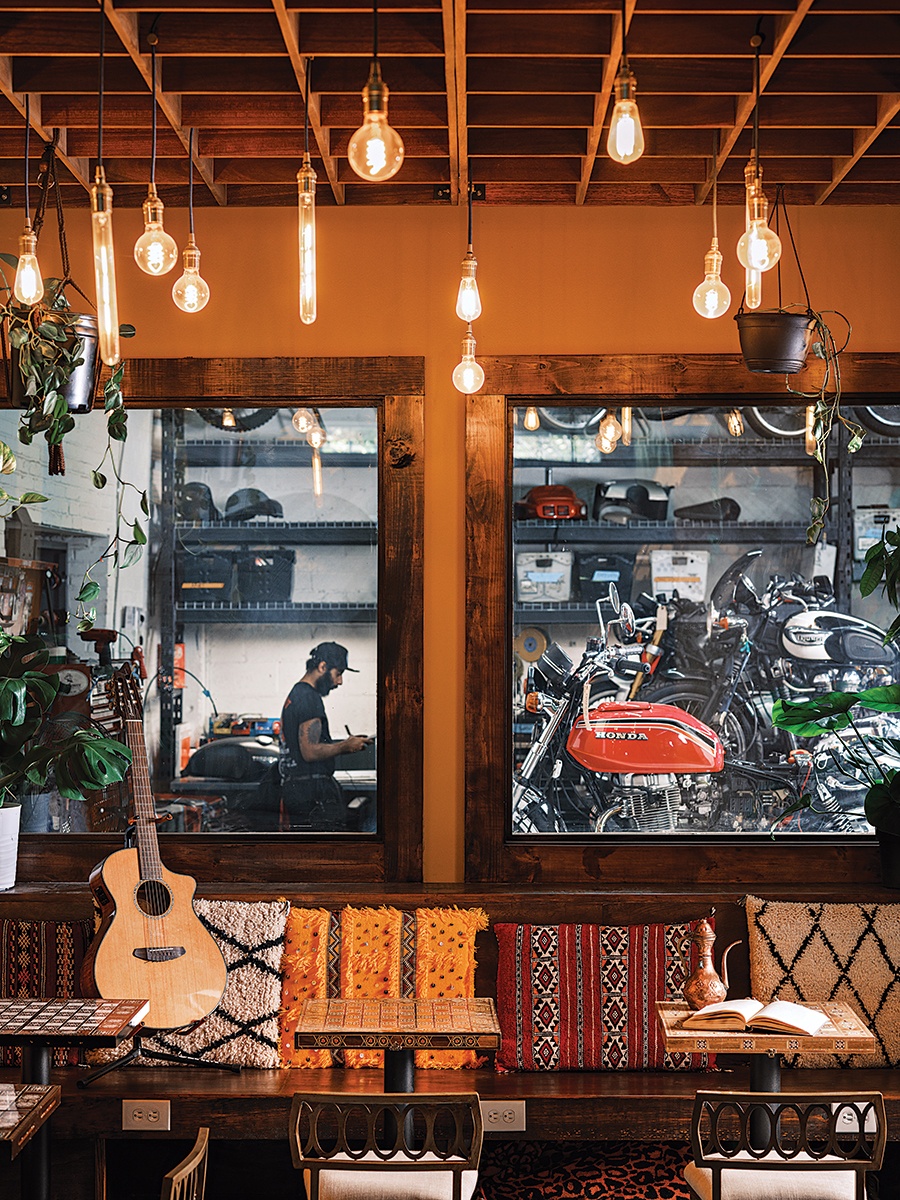
Inside Madhouse Motors, where the full-service shop rebuilds and maintains more than 100 motorcycles a year in the city. / Photo by Dan Cutrona
Depending on how much the project and design entail, custom bikes can take anywhere between four to 18 months and are built with found objects, fully fabricated with whimsical parts such as taillights featuring old rotary phones and microscopes. For restorations, the time frame can be similar—except if it’s a rare bike that requires sourcing parts from overseas.
Whether restoring or custom building, Shia’s work requires abilities most people are unaware of. “To be a mechanic—especially on motorcycles—you have to understand history,” she says. “You have to understand math, science, kinetic energy, geometry, and more. For myself and for the techs at the shop, we love how much we get to nerd out while working on these tough machines.”
Shia also appreciates how her photographer’s eye informs her work today. “I’m starting to slowly realize how it gets intertwined where when I build, I try and make sure that the bike looks good from 20 feet away. I care a lot about the composition and how the machine looks from different angles,” she adds. “Spending four years at a fine arts school has trained my eye and my mind to be able to look at and critique this work with an artistic eye, which I really appreciate.”
